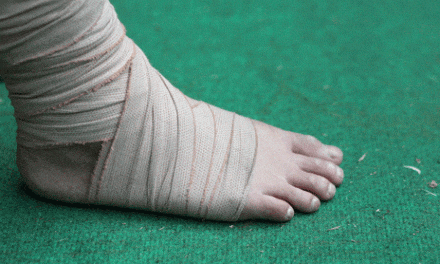Ciaran Powers, MD, PhD, a neurosurgeon at The Ohio State University Wexner Medical Center, is conducting research focused on preventing subarachnoid hemorrhage (SAH), a rare but often fatal type of stroke. According to a Science Daily news report, this type of stroke, the result of ruptured blood vessels leaking blood between the skull and brain, is fatal 50% of the time. A “thunderclap” headache is a sudden intense pain that is the hallmark of SAH.
However, Powers explains that there is continued danger even if a patient survives the initial hemorrhage. He explains, “Of those patients who survive the initial hemorrhage, 30% will go on to have a secondary stroke within 2 weeks of the initial event, which can cause further disability or death. We don’t know exactly why these delayed strokes happen, or who will get them.”
The secondary stroke, known as delayed cerebral ischemia (DCI), is caused by spasms in brain blood vessels that block blood flow. Powers is looking for a way to stop DCIs before they can even happen, saying, “My goal is to decode the biological processes in the brain that trigger the DCIs. Then we can identify high-risk patients and step up our interventions, or if a patient is at less risk, we could get them out of the ICU and into a step down unit a little sooner.”
In a small study supported by Ohio State’s Center for Clinical and Translational Science (CCTS) Davis Bremer Pilot Award, Powers identified more than 140 micro-RNAs that are present in the spinal fluid of eight patients who had an SAH followed by DCI. Powers categorized the micro-RNAs into abundance patterns, compared them with normal controls, and then focused on a handful of micro-RNAs that literally leapt out of the pack, as indicated on the Science Daily news report.
Powers states, “Some of these micro-RNAs shoot up immediately after a stroke and then level out, others start low and then go up. We found three micro-RNAs, all connected to dysfunctions in neurological remodeling and repair, that increase as much as 100-fold, so we have a compelling place to start looking.”
Powers plans to expand his study size and is partnering with another CCTS-funded stroke investigator to get answers to questions about SAH.
Photo Appears Courtesy of Ciaran Powers, MD, PhD, Ohio State University Wexner Medical Center
[Sources: Science Daily, Ohio State University Center for Clinical and Translational Science]





